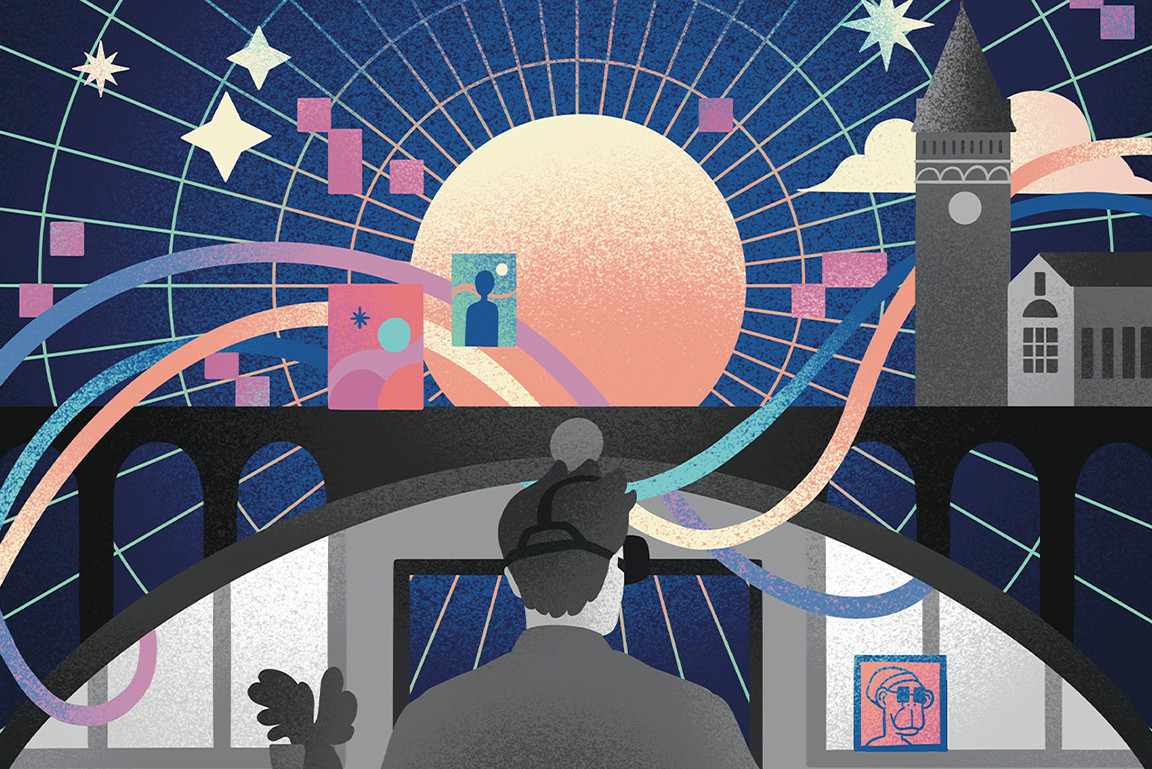While many of the elements that make up the metaverse are already here, with virtual and augmented realities, AI and machine learning, cryptocurrencies and more, how--and to what degree--their fully-developed convergence could be a paradigm shift for individual and business applications still remains to be seen.
One of the reasons the metaverse is getting so much attention at the moment is not just the record investments being made in areas like virtual real estate, but it’s also undoubtedly a result of the covid-19 pandemic, which brought so much human activity and interaction online. The media has also been watching curiously. Time magazine, which launched its own metaverse-dedicated newsletter in November 2021, put it well: there’s “a battle being waged over what the next stage of the internet will look like, and who will control it.”
Three potential scenarios
In its “A whole new world? Exploring the metaverse and what it could mean for you” , published in April 2022, Deloitte anticipates the full manifestation of the metaverse taking five to 10 years but reviews a range of different factors which will drive its evolution, offering different scenarios of how this could play out.
They frame three outlooks in particular: first, what they call “low orbit”, where the metaverse would not become a general-purpose platform, even if at its basis the metaverse can do some things well. Then there’s a “double star” scenario, where there may not be one single metaverse, but rather “a handful of major players vying for share of a dynamic marketplace,” a scenario which could lead to highly concentrated market due to hefty capital and M&A activity. Finally, there’s what they call the “Big Bang”, where the metaverse becomes the preeminent interface for most daily activities.
Ultimately, however, the Deloitte report’s authors fail to see a “failure to launch” scenario.
Too early to envision the full potential
, innovation director within the Deloitte Luxembourg tax department, leads a team whose mission is to foster innovation with both an internal and external perspective, supporting both startups and large companies to review their business operating models and accelerate digital transformation. Amroune has, of course, been keeping a close eye on how the metaverse space is evolving.
His thoughts on the metaverse: “There are a lot of things going on in terms of technology, investment and media attention, so in that respect, we can say it’s a bubble… but it’s a bubble founded in what I think is a real thing.”
He compares this effect to what was seen in the dot-com bubble of the 1990s, a time when there was excessive speculation surrounding internet companies and services. The later crash from the effect ultimately caused many e-commerce merchants to go bust. While the different technologies for the metaverse are maturing, Amroune adds that the projection for the metaverse to become totally embedded in daily life would take roughly a decade. He notes that the gaming industry is ahead of the curve, the biggest use case therein being non-fungible tokens (NFTs), the digital ownership of which he says will “be a big boost in the economy and in the business of gaming.”
What Amroune gets most excited about regarding the metaverse is not just all the creativity and creators behind it, but the fact that we can’t even envision what this space will look like in 10 years’ time.
Key drivers influencing the future of the metaverse
The take-off of the metaverse will be driven by four factors in particular, per Deloitte: standardisation, market fragmentation, user interface and governance.
“We will probably have multiple metaverses with specific purposes, each with a leader on its own.”
The first, standardisation, takes into account standards and protocols, as well as interoperability from platform to platform. Amroune believes that a single metaverse is unlikely: “We will probably have multiple metaverses with specific purposes, each with a leader on its own.”
Which would lead to the second driver--market fragmentation. Who will be the market leaders in this domain? What about competition and its impact on innovation? Amroune is confident clear market leaders will emerge in different areas--e.g., the entertainment space--and anticipates “a lot of restructuring, and mergers and acquisitions in the coming years.”
Users will likely want an intuitive and seamless experience with the interface, and here also the innovation director is confident. “We can achieve that because it’s linked to the creativity and to the capabilities of the technology, which are constantly increasing,” he argues. “The headset with VR or AR will probably be better and better--just think about the first phones, and you see our smartphones today.”
Luxembourg’s role
It’s in the fourth driver, governance, where Amroune sees real potential for the grand duchy. It will be tricky to properly ensure trust and security, and to protect digital assets and IP within the metaverse.
“There are still a lot of unknowns,” he adds. “[Governance] is the part where Luxembourg can play a role because we are placed well with that and have experience in dealing with complex and sophisticated regulation.”
Of course, for a company as large as Deloitte, it can build up capabilities and its network at an international level. But what about Deloitte Luxembourg’s clients? “They’re still in the stage of questioning, curiosity, so they’re asking us what they can do. They don’t come up with a specific demand to answer--at least not a lot--but we feel the curiosity, and they want to understand [the metaverse], and rather quickly.”
“What excites me is that we don’t see exactly all the potential there is in the metaverse. There are a lot of creativity, ideas around that, what startups are doing, investments…” The level of creativity, he adds, is “super exciting.”

